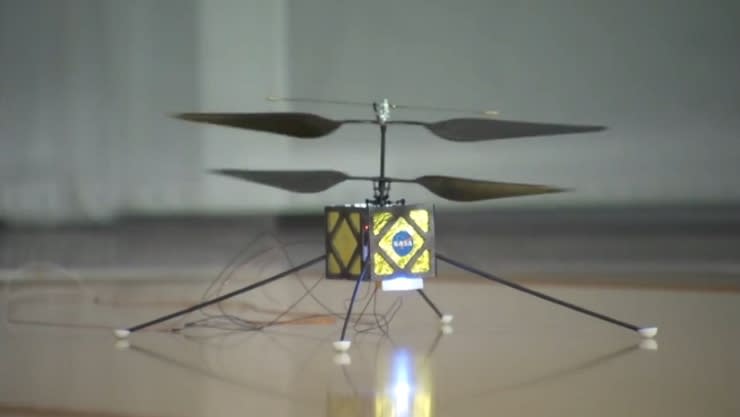 Business 2 Community
Business 2 CommunityNASA Is Developing A Helicopter Drone For 2020 Mars Mission
NASA researchers are currently developing a helicopter drone which they hope to send to Mars in 2020. The drone would accompany a six-wheeled land vehicle being designed for the space agency’s next rover mission.
The copter drone is being developed by NASA’s Jet Propulsion Laboratory (JPL). The drone weighs 2.2 pounds and features elicopter blades measuring 3.6 feet from tip to tip.
Researchers at JLP have released a video which explores the possibility of bringing a drone to Mars.
JPL mechanical engineer Mike Meacham explains in the video:
“If our rover was equipped with its very own helicopter that could see over tall objects in front of it, it would allow us to make decisions much more efficiently on which way to command the rover.”
Developing a drone for Mars is vastly different than developing a similar piece of technology for Earth. The drone will need to fly in the thin, almost nonexistent atmosphere of Mars. The body of the Mars drone must be relatively lightweight compared to a bulkier blade system to achieve lift in an atmosphere that’s just 1 percent as dense as Earth’s.
Bob Balaram, chief engineer of mobility and robotics systems at JPL, explains that the drone would likely only fly three-minute flights, and would climb to a heigh of 330 feet.
“It has to be autonomous in terms of being able to fly and maintain stable flight,” Balaram explains in the video. “And then, this system has to repeatedly take off and land on natural rocky terrain like you see out here. And then, the other one is that it has to survive the harsh environment of Mars.”
The drone would be recharged using solar power, and would feature a high-resolution camera and a communications system that would relay data to the land-based rover.
This article was syndicated from Business 2 Community: NASA Is Developing A Helicopter Drone For 2020 Mars Mission
More Technology & Innovation articles from Business 2 Community:


